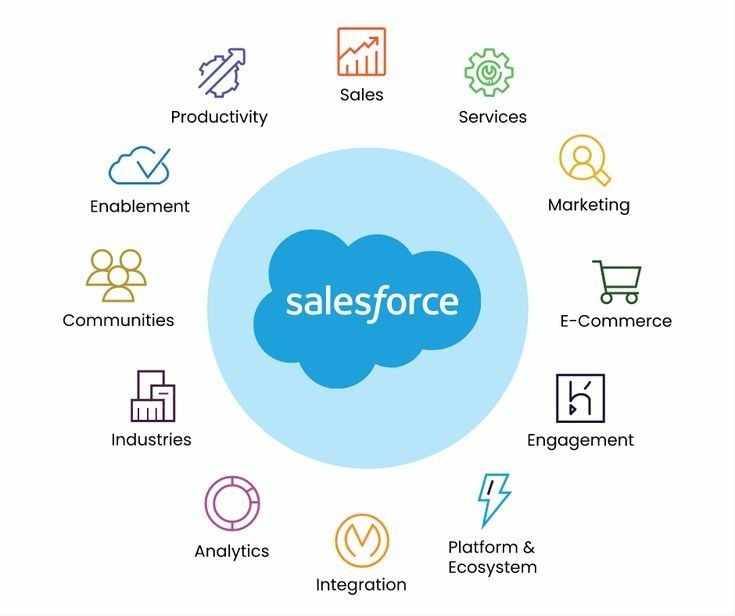Salesforce has emerged as the go-to platform for businesses seeking to streamline their operations and enhance customer engagement. Whether it’s customizing Salesforce, enabling Salesforce integration, or implementing B2B automation, the platform provides the tools necessary to meet diverse business needs. This article explores how comprehensive Salesforce migration services, development, and administration can help businesses achieve their goals and unlock new growth opportunities.

The Importance of Salesforce Implementation
What is Salesforce Implementation?
Salesforce Implementation involves setting up Salesforce to align with a company’s unique workflows, ensuring maximum efficiency and value. A successful implementation requires detailed planning, customization, and seamless integration with existing systems.
Steps in Salesforce Implementation:
Business Analysis: Define goals and identify processes that Salesforce will enhance.
Customization: Adjust Salesforce features to match operational needs.
Data Migration: Transfer data securely and ensure its integrity.
Integration: Connect Salesforce with other tools and platforms to streamline workflows.
Benefits of a Proper Implementation:
Increased efficiency through centralized data.
Enhanced collaboration across teams.
Improved decision-making with real-time analytics.
Customizing Salesforce for Unique Business Needs
One of Salesforce's key strengths lies in its flexibility to adapt to different business models. Customizing Salesforce involves tailoring its features, objects, and workflows to meet specific organizational requirements.
Common Customization Areas:
Custom Objects: Create objects specific to your industry.
Workflows and Automations: Set up triggers to automate repetitive tasks.
Dashboards and Reports: Design visuals that provide actionable insights.
Example Use Case:
A retail business customized Salesforce to include a unique order tracking system, integrating customer service, inventory, and delivery updates. This reduced response times and improved customer satisfaction.
The Role of Salesforce Integration in Unified Workflows
Salesforce integration is essential for businesses looking to achieve a seamless flow of information across different departments and systems. Integrations enable Salesforce to work alongside other tools, ensuring that all business functions are synchronized.
Popular Salesforce Integrations:
ERP Systems: Sync Salesforce with enterprise resource planning tools to improve inventory and order management.
Marketing Platforms: Connect Salesforce with email marketing tools to manage campaigns and track customer engagement.
Customer Support Systems: Integrate with platforms like Zendesk to provide a unified customer experience.
Benefits of Salesforce Integration:
Eliminates data silos by consolidating information.
Increases efficiency with automated workflows.
Improves decision-making with a complete view of operations.
Case Study:
A technology firm integrated Salesforce with its ERP and email marketing platforms, enabling automated lead scoring and personalized customer outreach. This boosted conversion rates by 40%.
Enabling B2B Automation with Salesforce
Automation is a cornerstone of Salesforce's value proposition, particularly for B2B companies looking to scale. B2B automation simplifies complex workflows, allowing businesses to focus on strategic goals.
Key B2B Automation Features in Salesforce:
Lead Scoring and Assignment: Automatically qualify and assign leads to the right sales representatives.
Sales Pipeline Management: Automate follow-ups and updates throughout the sales process.
Contract Management: Simplify the creation, approval, and renewal of contracts.
Why B2B Automation Matters:
Reduces manual errors.
Speeds up response times, improving client relationships.
Enhances scalability as your business grows.
Example:
A B2B logistics company used Salesforce automation to manage its sales pipeline and generate automated quotes. This reduced the quote creation process from 2 days to just a few hours.
Salesforce Migration Services: Ensuring a Smooth Transition
Salesforce migration services are crucial for businesses transitioning from legacy systems or upgrading their existing Salesforce setup. A successful migration requires meticulous planning to avoid data loss and ensure system compatibility.
Steps in Salesforce Migration:
Data Assessment: Analyze the quality and relevance of data to be migrated.
Data Mapping: Align data fields between the old system and Salesforce.
Data Cleaning: Remove duplicates and outdated information to improve accuracy.
Testing and Validation: Verify that all data has been successfully transferred.
Challenges in Salesforce Migration:
Data Integrity: Ensuring all records are accurate and complete.
System Downtime: Minimizing disruption to operations during the migration.
Integration Compatibility: Aligning migrated data with existing integrations.
Overcoming Challenges with Expert Services:
Experienced Salesforce consultants use tools like Data Loader and custom scripts to ensure a seamless migration process.
Salesforce Administration: Ongoing Support and Optimization
Once Salesforce is implemented, Salesforce administration ensures that the system remains efficient and up-to-date. Administrators handle everything from user management to troubleshooting integrations.
Key Responsibilities of Salesforce Administrators:
User Management: Control access with roles and permissions.
System Monitoring: Track performance and identify areas for improvement.
Data Management: Maintain data accuracy and compliance.
Integration Oversight: Ensure integrated systems continue to operate smoothly.
Why Administration is Essential:
Keeps the system aligned with evolving business needs.
Ensures security and compliance.
Optimizes workflows for maximum efficiency.
Leveraging Salesforce Development for Advanced Features
Salesforce development services extend the platform’s capabilities, enabling businesses to create custom apps and advanced functionalities. Developers use tools like Apex, Visualforce, and Lightning Web Components to deliver tailored solutions.
Examples of Development Services:
Custom Dashboards: Build user-friendly interfaces for specific roles.
Advanced Workflows: Automate complex processes beyond standard configurations.
Custom Applications: Create apps for niche business requirements.
Impact of Development Services:
Enables businesses to address unique challenges.
Enhances user experience with tailored features.
Provides scalability for future growth.
Conclusion
End-to-end Salesforce services, including customizing Salesforce, Salesforce integration, B2B automation, and Salesforce migration services, empower businesses to optimize their operations and achieve sustainable growth.
By investing in expert Salesforce implementation, development, and administration, organizations can unlock the platform’s full potential. From seamless data migration to advanced automation, Salesforce provides the tools needed to succeed in today’s competitive landscape.
Whether you’re just starting your Salesforce journey or looking to enhance your existing system, comprehensive services ensure that your CRM strategy is aligned with your business goals, paving the way for long-term success.




Write a comment ...